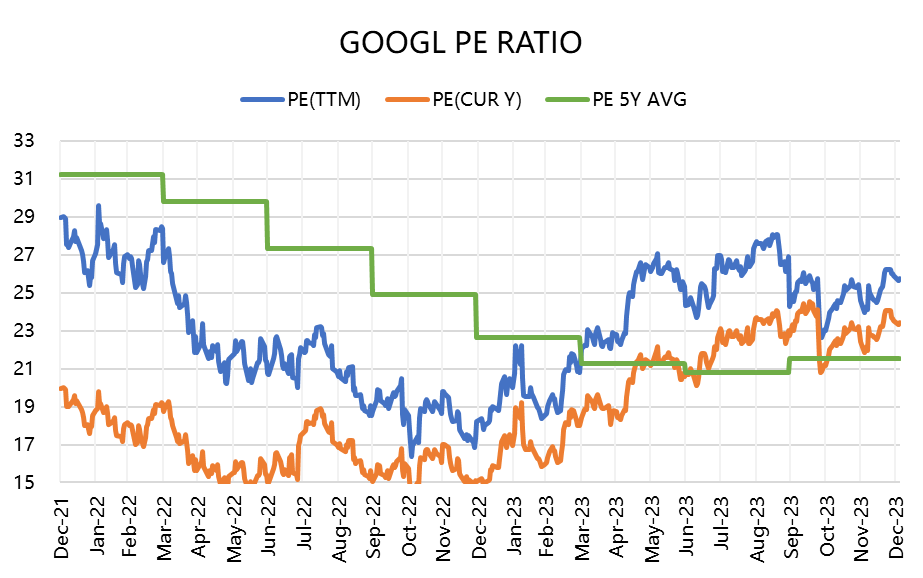Obviously, the prominent big tech companies (the "Magnificent Seven") that performed well last year have started to pull back. The stacking of investors' trades often leads to more pronounced downward movements, as an increasing number of quantitative trades, including traditional active funds, have similar risk exposures in these big tech stocks, as well as similar factor exposures.
The valuation is certainly one of the important factors. After the crazy surge in 2023, the valuations of several major tech stocks are not low. However, in comparison, $Alphabet(GOOGL)$ $Alphabet(GOOG)$ $Amazon.com(AMZN)$ , and $Meta Platforms, Inc.(META)$ have relatively lower valuations, while the most popular $Apple(AAPL)$ and $Tesla Motors(TSLA)$ have relatively higher valuations.
Below are the changes in the price-earnings ratios (PE) of the Magnificent Seven over the past two years, comparing the PE over the past 12 months, the current year's PE, and the 5-year average PE.
So, it's not surprising that GOOGL and AMZN are also more resistant to declines these days.
Of course, for options traders, except for $NVIDIA Corp(NVDA)$ , using the 5-year average PE as a valuation support level can be beneficial for naked selling of PUT options, whether for earning option premiums or for the purpose of establishing or adding to positions.








Comments